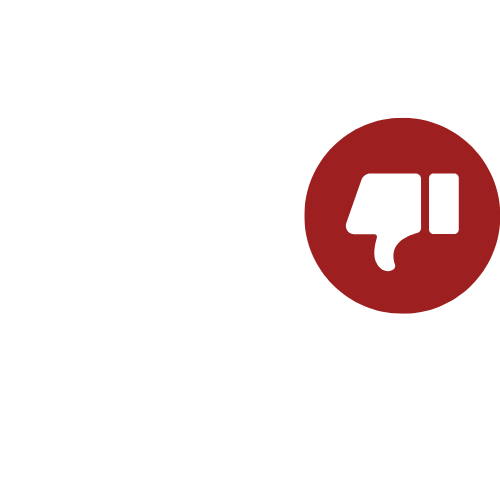By Patrice M. Kelly, JD, Senior Policy Executive Advisor National Drug & Alcohol Screening Association
This is the first in a series of articles I am writing to dispel the “myths and urban legends” surrounding the U.S. Department of Transportation (DOT) drug and alcohol testing. Although the oral fluid final rule was published on May 2, 2023, there have already been numerous misunderstandings and misconceptions regarding what were intended to be helpful additions to the DOT’s plain language regulation, 49 CFR Part 40, Procedures for Transportation Workplace Drug and Alcohol Testing Programs. As the lead author of the DOT team who wrote the Oral Fluid Final Rule, I want to explore with you some of the confusion that has unexpectedly popped up and that can easily be resolved.

MISCONCEPTION: “Finally, I can begin oral fluid testing!”

FACT: It’s not time to implement yet!
No DOT-regulated employer can conduct oral fluid testing until the U.S. Department of Health and Human Services (HHS) certifies a primary and a secondary laboratory to conduct oral fluid testing. Due to the nature of oral fluid collections, many of the devices could have pads that absorb the oral fluid from the donor’s mouth. The pads would then be placed into a buffering solution in Bottles A and B and sent to the HHS-certified laboratory. The laboratories must have the needed reagents and processes to be able to test for the drugs that settle into the buffering solution of a specific device. Not all devices are the same. Consequently, a laboratory will need to select the device(s) it will use, ensure proper reagents are available and demonstrate to the HHS National Laboratory Certification Program proficiency and consistency in testing a particular type of device for the Federal 5-panel of drugs before HHS can certify the laboratory. I have been told it is likely to be late 2023 or early 2024 before laboratories apply for HHS-certification. Once the applications are submitted, it should take 4-6 months for full HHS certification. NDASA will keep you posted as we hear more about this.

MISCONCEPTION: “The Coast Guard and PHMSA will not allow oral fluid testing!”

FACT: This is not true!
While the other DOT Agencies made changes to their regulations in the Oral Fluid Final Rule to enable their regulated employers to conduct oral fluid testing, the United States Coast Guard and the Pipeline and Hazardous Materials Safety Administration did not need to make changes in the final rule to permit oral fluid testing to be implemented for their regulated audiences. Consequently, all DOT Agencies will be able to allow their respective regulated entities to use oral fluid testing.

MISCONCEPTION: “Employees can choose what test they want to take!”

FACT: This is NOT true – EVER!
The DOT has been clear in the regulatory text and the preamble of the oral fluid final rule that the choice of testing methodology is up to the employer.
Since DOT is allowing a second testing methodology, employers and their service agents need to develop a completely new approach to drug testing. In the past, when an employer sent an employee to the collection site for a DOT-regulated test, a urine test would be conducted because that was the only option. Now, whenever an employer sends an employee to a collection site there will be the question or what methodology should be used. Even if an employer wants to continue with only urine testing in the future, that choice needs to be expressed to the collection site in advance.
The method of expressing that choice is what the preamble to the Oral Fluid Final Rule refers to as “the standing order.” Whether the service agent develops the standing order and has the employer sign off on it, or if the employer wants to develop the standing order itself, the key point is that the employer’s choice is expressed to the collection site regarding which methodology (urine or oral fluid) is to be used for which type of test (pre-employment, random, reasonable cause/ suspicion, return-to-duty, follow-up, and post-accident for DOT agencies other than the Federal Railroad Administration). The standing order also needs to address which methodology is to be used in “problem collections”, such as those that require a direct observation collection, shy bladder scenarios, and dry mouth scenarios. The only time the DOT requires a particular type of test to be administered is in the scenario where a transgender or nonbinary individual needs a directly observed collection – and that must be an oral fluid collection.
In considering what to include in a standing order, the employer and its service agents should consider what type of testing is the best for the employer’s program. Urine direct observation collections remain an available option. But will they be the most cost-effective way to ensure a direct observation when every oral fluid test is directly observed? For the purposes of costs, windows of detection, and other considerations, what methodology works best when? This is an important discussion that should take place and be documented in advance of any collections. This is also a great opportunity for service agents to market their services and for employers to increase their education and knowledge regarding testing methodologies. Have these conversations and make them work for you!
Disclaimer
Patrice Kelly is an employee of the United States Department of Transportation (DOT) on detail to the National Drug and Alcohol Screening Association (NDASA) as the Senior Policy Executive Advisor. The views reflected here are expressed in her personal capacity. Ms. Kelly’s views have not been subjected to review, clearance, or approval by DOT, and they do not necessarily represent the views of DOT.
